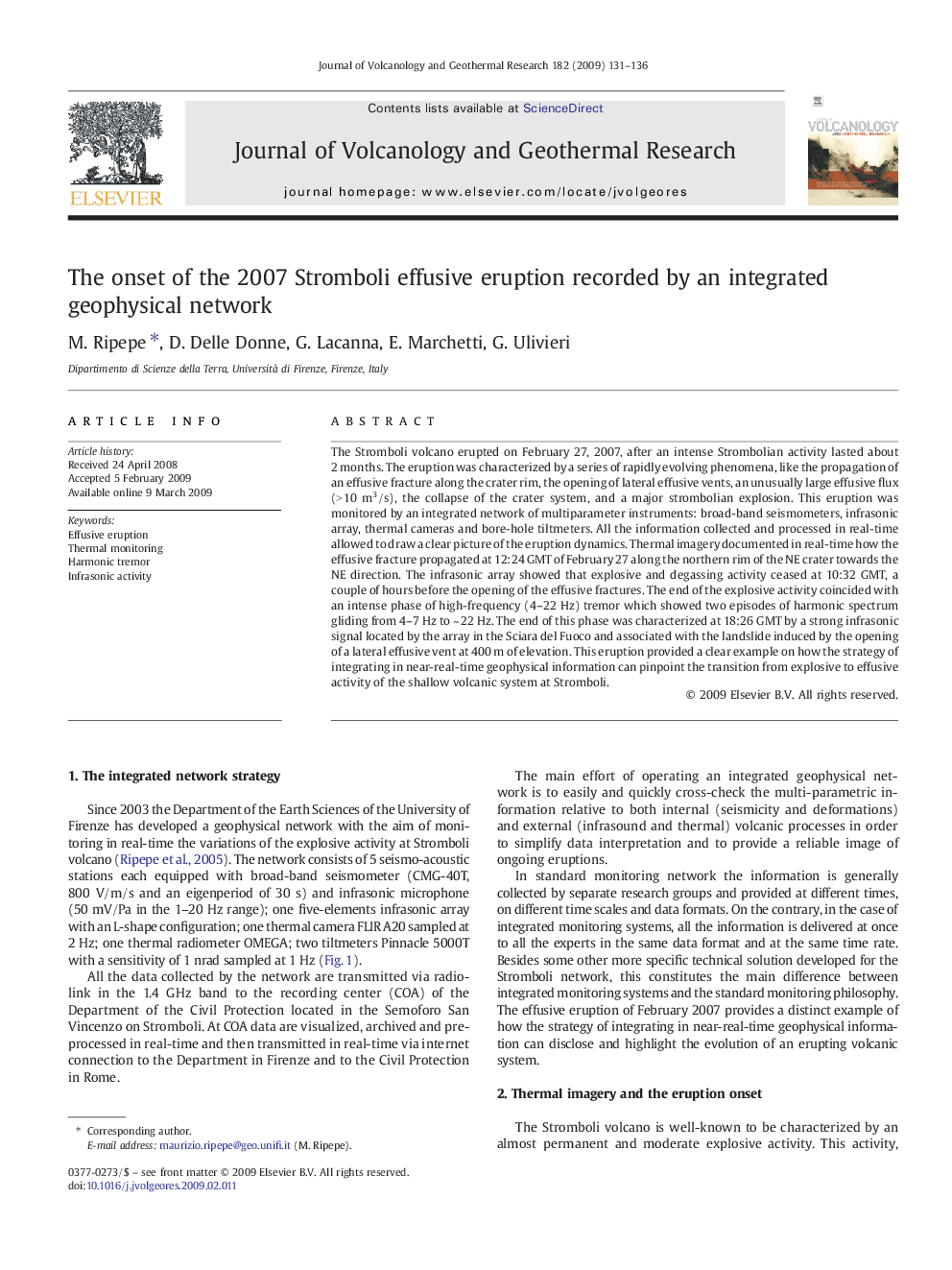| Article ID | Journal | Published Year | Pages | File Type |
|---|---|---|---|---|
| 4714208 | Journal of Volcanology and Geothermal Research | 2009 | 6 Pages |
The Stromboli volcano erupted on February 27, 2007, after an intense Strombolian activity lasted about 2 months. The eruption was characterized by a series of rapidly evolving phenomena, like the propagation of an effusive fracture along the crater rim, the opening of lateral effusive vents, an unusually large effusive flux (> 10 m3/s), the collapse of the crater system, and a major strombolian explosion. This eruption was monitored by an integrated network of multiparameter instruments: broad-band seismometers, infrasonic array, thermal cameras and bore-hole tiltmeters. All the information collected and processed in real-time allowed to draw a clear picture of the eruption dynamics. Thermal imagery documented in real-time how the effusive fracture propagated at 12:24 GMT of February 27 along the northern rim of the NE crater towards the NE direction. The infrasonic array showed that explosive and degassing activity ceased at 10:32 GMT, a couple of hours before the opening of the effusive fractures. The end of the explosive activity coincided with an intense phase of high-frequency (4–22 Hz) tremor which showed two episodes of harmonic spectrum gliding from 4–7 Hz to ~ 22 Hz. The end of this phase was characterized at 18:26 GMT by a strong infrasonic signal located by the array in the Sciara del Fuoco and associated with the landslide induced by the opening of a lateral effusive vent at 400 m of elevation. This eruption provided a clear example on how the strategy of integrating in near-real-time geophysical information can pinpoint the transition from explosive to effusive activity of the shallow volcanic system at Stromboli.
